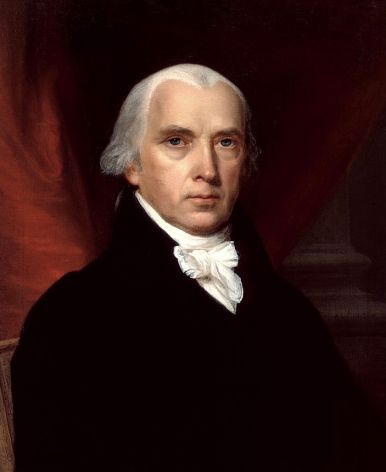The 4th of July and the Bible
Though the Fourth of July is celebrated as America’s founding, our true heritage goes back further than 1776. Was America’s independence prophesied in the Bible?

On July 4, the United States celebrates its 249th anniversary.
The Fourth of July holiday celebrates the signing of the Declaration of Independence, which declared the American colonists’ independence from Great Britain. Though this was when the founders declared their intention to break away from Great Britain, that independence wasn’t fully realized until after the bloody seven-year Revolutionary War.
Historians continue to debate how a ragtag group of colonists with no national government could defeat a global empire and the world’s most powerful army.
On paper, it was certainly a war Britain should have won, and there are many reasons the American victory over the British Army was miraculous.
Is there a reason to believe God’s providence was at work in history?
Victory did not settle America’s fate
The United States of America as we know it was not created spontaneously when Britain signed the Treaty of Paris or when the last British soldiers left New York in November 1783. The greatest challenge that faced the newly independent states was creating a functioning union that would bind the states into one nation.
The states’ becoming one unified nation was not at all a given early in its history.
The greatest challenge that faced the newly independent states was creating a functioning union that would bind the states into one nation.
One of the greatest controversies after the Treaty of Paris was this issue: Would America become a collection of individual, sovereign states loosely tied together as a confederation, or would the individual states be unified as a nation—bound together by a powerful national government that would allow it to act as a single nation?
That issue took years to settle.
If it were not for a series of miracles and compromises, the United States could have easily become a confederation of sovereign states (similar to today’s European Union)—or even fragmented into separate nations across the various regions of the American landmass.
Imagine North America looking like Africa, Europe or South America—a continent containing several independent nation-states.
That outcome could have happened.
From Articles to Constitution
The first attempt at a functioning union of the states was the Articles of Confederation. The United States operated under this document for eight years (1781-1789). It formed a very loose confederation between the states, led by a Continental Congress that had little power. Each individual state retained its own sovereignty and was not required to submit to the national government.
Under the Articles of Confederation, there was no national executive office (president), no national currency (each state printed its own), and no national taxation. The national Congress had no power to govern commerce between the states or require the states to abide by treaties made with foreign governments. Throughout those eight years, the Articles of Confederation proved to be unworkable.
Failure at the Philadelphia convention could have resulted in a regional fracturing of America—preventing one union from coming into existence.
A growing number of American thinkers began to promote a different form of governance called federalism. This called for a stronger national government with an executive branch and a clearer delineation of powers between the states and national government.
Those who supported this stronger union were called Federalists, and those who opposed it came to be known as Anti-Federalists. (History buffs can dive deeper into the arguments of both sides by reading the Federalist Papers and the Anti-Federalist Papers.)
It wasn’t until 1787 that the controversy began to be settled. Because of the inefficiencies of the Articles of Confederation (made obvious by the infamous Shays’ Rebellion), the states agreed to send delegates to Philadelphia to discuss making improvements to the Articles of Confederation.
Eventually, the delegates decided that the convention would become a constitutional convention, with the goal of designing an entirely new system of governance based on the principles of federalism.
The challenge was whether or not the delegates could agree on a constitution that all states (large and small, north and south) would ratify. The stakes were high. Failure at the Philadelphia convention could have resulted in a regional fracturing of America—preventing one union from coming into existence.
Again, this outcome was not only possible, but was highly likely given the political atmosphere of early America.
A new Constitution
But, in about four months, the delegates were able to produce a new Constitution for the United States of America. It would bind the states into a strengthened union led by a national government with more powers. This was achieved through savvy politics, political compromise and intentionally not addressing one of the most divisive issues of the time—slavery.
James Madison was one of the principle authors of the Federalist Papers and U.S. Constitution. 
After the Constitutional Convention finally had a finished document, the next order of business was convincing the individual states to ratify the proposed Constitution. The document itself stipulated that it needed to be ratified by at least nine states before it could go into effect. The challenge was getting large states like Virginia and New York to vote for ratification because, as large and powerful states, they had the most to lose in surrendering more authority to a national government.
The Constitution could have theoretically been passed without all states ratifying it, but that would have ultimately left the land divided.
But all states eventually did ratify the Constitution. The whole process was completed (for the original 13 states) when Rhode Island finally ratified the new Constitution in 1790. With all 13 original states joining the union under the new Constitution, America was set on course to develop as one unified nation—eventually spanning from the Atlantic to the Pacific.
But maintaining the union was not without its hardships—it took many more compromises and a bloody four-year Civil War to settle the issue of slavery once and for all.
The United States in prophecy
Okay, you may be asking, why is all this history important?
Did you realize that the United States’ breaking from Great Britain to become a nation was a fulfillment of a prophecy made over 3,600 years ago?
As we explain in our article “How the Blessings of Abraham Came to the United States,” certain physical blessings were promised to Abraham. These blessings were passed down to his son Isaac, then to Isaac’s son Jacob and finally to Joseph’s two sons, Ephraim and Manasseh.
Americans would do well to consider the life of their original founding father—the patriarch Abraham—and recall his life of faithful obedience to God.
Jacob, in a very specific prophecy, declared that Ephraim would become a “multitude of nations” and Manasseh would become a single great nation (Genesis 48:19). Genesis 49:1 reveals that these promises were to be fulfilled in “the last days”—in other words, the modern era (from our historical viewpoint).
The promise of a “multitude of nations” was fulfilled by the British people—who became an empire and later a commonwealth of nations. Today Ephraim’s promises are primarily fulfilled in the nations of the United Kingdom, Canada, Australia, New Zealand and South Africa (as well as other smaller nations that are part of the Commonwealth).
Manasseh’s promise of being a single great nation was fulfilled in the United States of America.
Something to consider on the Fourth of July
As Americans celebrate the Fourth of July, they would do well to consider that the Declaration of Independence from Britain was necessary in order to fulfill the Genesis 48:19 promise.
For the prophecy to be fulfilled, America had to be independent from Britain and had to unite into a unified single nation. The entire history of the development and ratification of the U.S. Constitution was essential for that prophecy to be fulfilled.
This understanding helps us to see God’s providential hand in history (Isaiah 46:10).
This Fourth of July comes at a troubled time in this nation’s history. This nation seems to be increasingly more divided on a host of issues that many fear could tear it apart. Now is a time when America could greatly benefit from returning to its spiritual roots. Those roots go back much further than the days of Washington, Jefferson, Adams and Franklin.
Americans would do well to consider the life of their original founding father—the patriarch Abraham—and recall his life of faithful obedience to God, as described in chapters 12-25 of Genesis. In his life, we can find insight into our nation’s troubles today. He was a man who had his flaws and made mistakes, but grew from them and faithfully relied on God.
You can learn more about him in our article “The Faith of Abraham.”
Originally posted on July 4, 2017; Updated on July 3, 2025.
Date Posted: July 4, 2025



